How two Russian spies went deep under cover with their children
By Andrew Higgins
Ljubljana, Slovenia: Darja Stefancic, a painter in Slovenia known for technicolour landscapes, thought it strange when an obscure online art gallery run by a woman from Argentina contacted her out of the blue and asked her to join its thin roster of artists.
The painter suspected a scam, and she worried that the gallery, which virtually nobody in Slovenia’s tiny, tight-knit art scene had heard of, “just wanted to cheat people”.
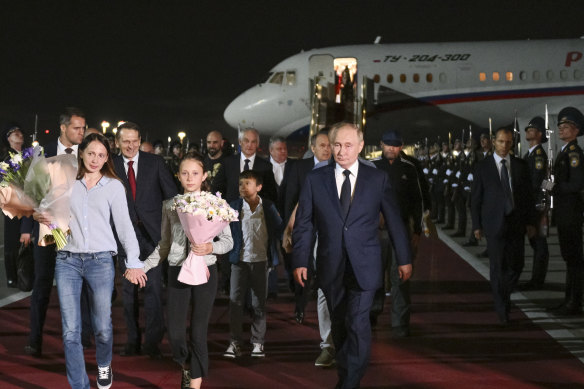
Russian President Vladimir Putin welcomes Russian citizens released in a prisoner swap including Anna Dultseva, Artem Dultsev and their children.Credit: AP
It did – but in ways that far surpassed even her darkest suspicions.
The online gallery was a front for Russian intelligence, part of an elaborate network of deep-cover sleeper spies trained to impersonate Argentinians, Brazilians and other foreign nationals by Russia’s foreign intelligence agency, the SVR, around Europe.
They were real-life versions of the fictional stars of The Americans, a television series inspired by the 2010 arrest of a ring of Russian sleeper agents in the United States.
Russia, and before it the Soviet Union, has a long history of investing heavily in so-called “illegals”, spies who burrow deep into target countries over many years. Unlike “legal” spies operating under diplomatic cover in Russian embassies, they have no immunity from prosecution or obvious connections to Russia and are extremely difficult to detect.
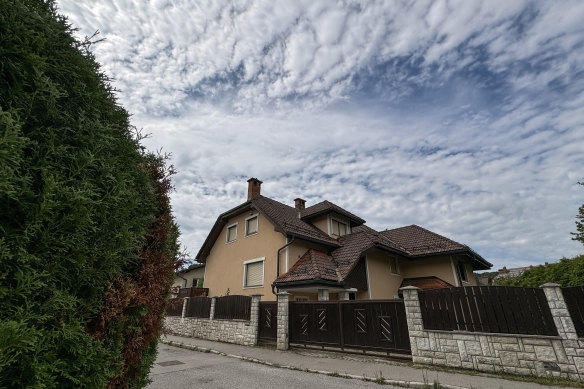
The house in Ljubljana, Slovenia, where the Russian spies who posed as Argentinian citizens, and used the names Maria Rosa Mayer Munos and Ludwig Gisch, lived with their children.Credit: Manca Juvan/The New York Times
Vladimir Putin, Russia’s president and a former KGB officer, “has thrown huge resources at this quite eccentric priority”, said Calder Walton, the director of research for the Intelligence Project at Harvard’s Kennedy School. “He has a real fetish for illegals going back to his time in the KGB.”
The art gallery owner in Slovenia, whose real name is Anna Dultseva, did such a good job impersonating an artsy Argentinian called Maria Rosa Mayer Munos that, according to the Kremlin, even her two children did not know the family had any ties to Russia until they were flown to Moscow on Thursday as part of a sprawling East-West prisoner exchange.
Putin greeted the children – a daughter aged 12 and a nine-year-old son – in Spanish, the language the family had spoken in Slovenia along with English to disguise their connections to Russia. “Buenas noches,” Putin can be heard saying in a video of the welcoming ceremony at a Moscow airport released by state television. Also greeting them was Sergey Naryshkin, the head of the SVR intelligence agency.
Dultseva and her husband were arrested in December 2022 when Slovenian authorities, who had been monitoring the couple for months after a tip-off from a foreign intelligence service, raided the family’s comfortable home in Crnuce, a suburb of Ljubljana, the capital of Slovenia.
A person briefed on the case said the raid had been timed to catch the couple red-handed as they communicated with Moscow using special equipment that avoided phone and internet lines. The tip-off, this person said, had come from Britain, which the couple visited frequently under cover of business. Dultseva organised two art exhibitions in Edinburgh, visiting Britain several times as Mayer Munos.
What Dultseva and her husband, Artem Dultsev, who masqueraded in Slovenia as an Argentinian called Ludwig Gisch and ran his own bogus business, a high-tech start-up, achieved as spies before their arrests in 2022 is still being assessed.
Neighbours in Crnuce say the family kept to itself, had a small dog and rarely received visitors.
The children, who were put in foster care after the parents’ arrests, attended the nearby British International School, whose fees – more than $US10,000 ($15,400) a year per pupil – were far beyond what the couple could afford based on financial reports they filed for their businesses.
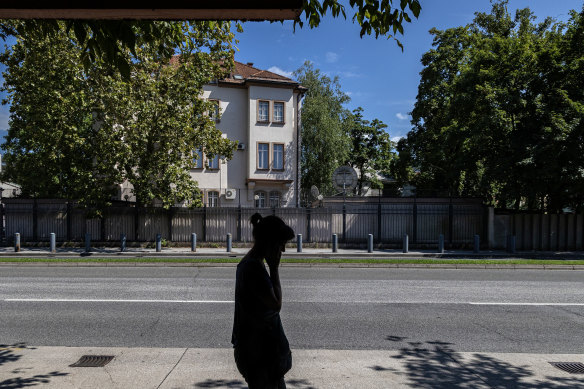
The Russian embassy in Ljubljana, Slovenia.Credit: Manca Juvan/The New York Times
Dultseva’s art gallery, called 5′14, reported a loss of €10,827 (about $18,250) in 2019, a profit of €483 in 2020 and a profit of €3032 in 2021, the last year for which it filed its annual results with authorities.
The modest results and the low quality of the gallery’s artwork, said Tevz Logar, a prominent Slovenian curator, should have stirred suspicion. But art in Slovenia “is a safe space” because “there is no scrutiny or control”, he added.
Most of the work Dultseva offered for sale, he said, “is the kind of art you order from China”.
Her husband’s company, DSM & IT, reported total profits of only a few thousand euros each year. Both businesses had only one employee.
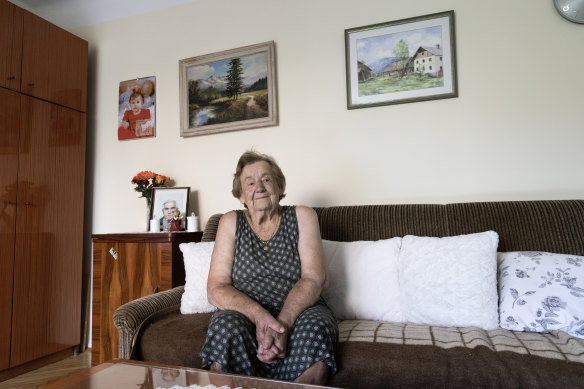
Majda Kvas lived opposite the Russian spies, who posed as Argentinian citizens.Credit: Manca Juvan/The New York Times
“They never said hello to anyone and lived entirely separate lives,” said Majda Kvas, a 93-year-old woman who lives opposite the spies’ former home, a three-storey house with a small garden surrounded by a wooden fence. Neighbours, Kvas said, sometimes gossiped about who the couple were and what they were doing, but mostly ignored them as they never caused trouble. “I thought they were from Venezuela,” she said.
Vojko Volk, Slovenia’s state secretary responsible for the security and intelligence services, said on Friday that investigators were still trying to piece together what the couple were up to exactly before their 2022 arrest, but “have no doubt they were very, very, very important”.
The discovery of large sums of cash in their home has prompted speculation that they were perhaps involved in financing Russian operations, including sabotage teams, across Europe. But Volk played that possibility down.
Marjan Miklavcic, the former head of Slovenia’s military intelligence, said Russian sleeper agents were often planted with no clear mission and served as a hidden reserve force that could be activated at a time of crisis.
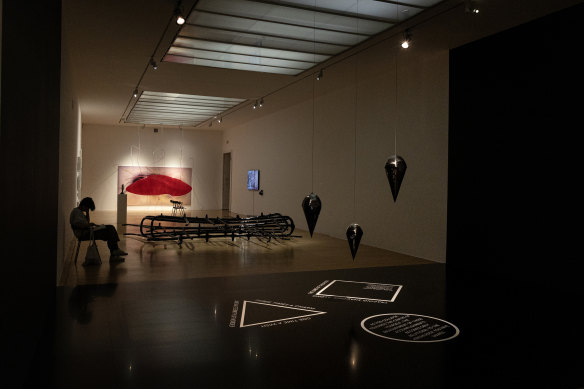
An exhibition at Ljubljana’s Museum of Modern Art, curated by Tevz Logar, in Slovenia, in August 2024. Logar said the poor quality of the works displayed by Anna Dultseva should have stirred more scrutiny in the country’s art community.Credit: Manca Juvan/The New York Times
The fake Argentinian couple first moved to Slovenia in 2017 but, he said, were probably only fully activated after the start of the full-scale war in Ukraine five years later, when suspected spies were expelled from various European countries.
In November 2022, the head of Britain’s MI5 security service said that more than 400 Russian spies had been expelled from across Europe, striking “the most significant strategic blow against Russian intelligence services in recent European history”.
Miklevcic said disarray in Russia’s espionage networks “meant that Russia lost a lot of its regular information sources and probably activated sleeper agents” to try to fill the gaps.
“But, of course, they are not James Bonds,” he added, citing the fact they had been caught and apparently made big mistakes in their craft.
The distance between how spies are portrayed in cinema and their often humdrum and sometimes incompetent actual lives has been experienced firsthand by Nina Khrushcheva, a Russian-born scholar at the New School in New York. In the early 2000s, she had a student called Richard Murphy, who claimed to be a native of Philadelphia, but, Khrushcheva recalled, “looked like Boris Yeltsin and had a heavy Russian accent”.
Murphy, whose real name is Vladimir Guryev, was arrested in 2010 for espionage in New Jersey along with his wife, part of the group that inspired The Americans, and later deported to Russia as part of another prisoner exchange. The arrest, Khrushcheva recalled, hardly came as a surprise since Murphy “was clearly lying through his teeth”.
The fake Argentinians in Slovenia seem to have been higher-calibre agents. Dultseva, the gallery owner, spoke largely accent-free Spanish, according to Mariken Heijwegen, a Dutch artist who used her as a sales agent.
The artist said she met Dultseva at an art fair in Croatia and sold two of her paintings thanks to the Russian. “She looked like an Argentine,” Heijwegen recalled, and was “very sweet and kind”.
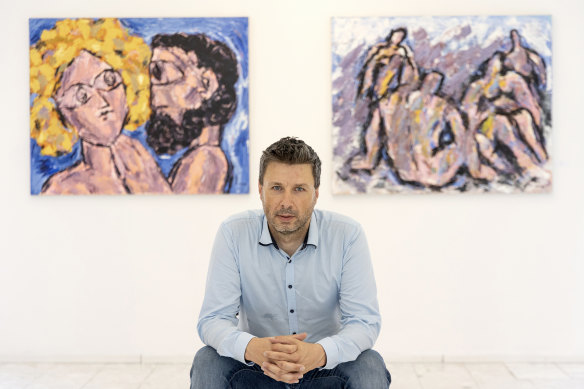
Damian Kosec, the founder and director of the SLOART Gallery and Auction House, in his gallery in Ljubljana.Credit: Manca Juvan/The New York Times
The artist said she had no idea that the woman she knew as Maria Rosa Mayer Munos had been arrested as a Russian spy until paintings she had left with her in Slovenia were suddenly sent back to the Netherlands.
Damian Kosec, a veteran of Slovenia’s art scene and owner of the country’s biggest online and physical gallery, said he had never heard of Dultseva’s business until news of her and her husband’s arrest broke in the media.
Choosing art as a cover, he added, made sense because “there is so little money in it in Slovenia that nobody in the government pays attention to it”.
He said he had been pushing officials in vain for years to crack down on dodgy operators selling fakes. “Nobody cares. You can do whatever you want in the art business here,” he said. “These Russians did not care about art. They just needed a business for cover.”
This article originally appeared in The New York Times.
Get a note directly from our foreign correspondents on what’s making headlines around the world. Sign up for our weekly What in the World newsletter.